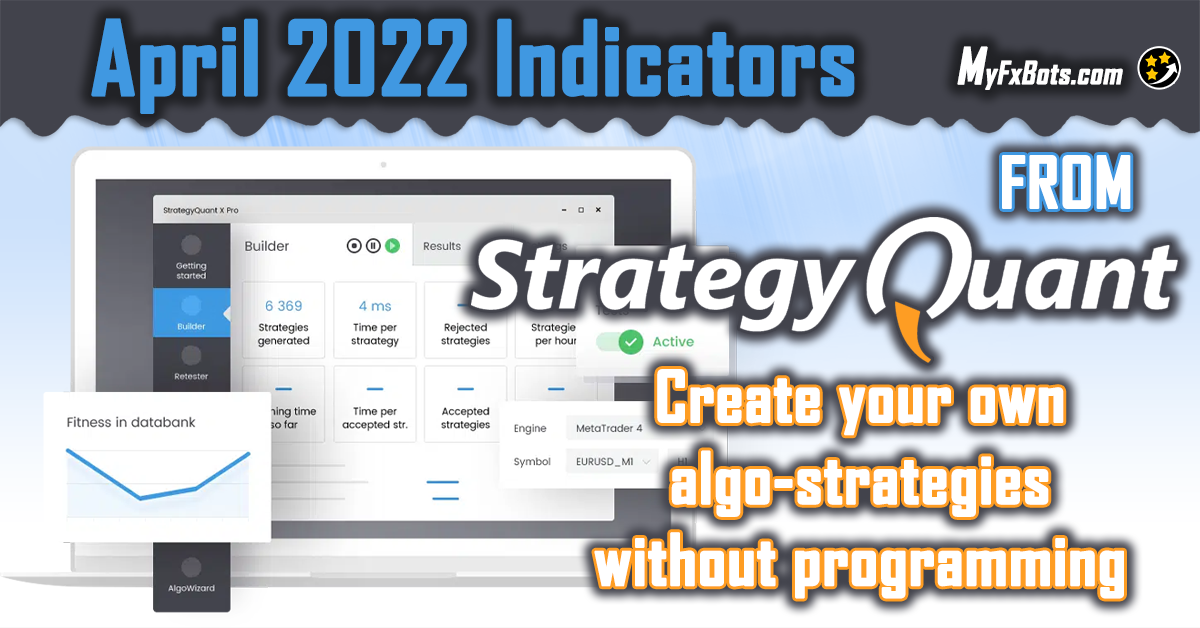
StrategyQuant X is a powerful software tool that allows traders and analysts to develop and implement their own automated trading strategies. With StrategyQuant X, you can create and customize your own algostrategy by utilizing its extensive features and capabilities. This document will guide you through the process of creating your own algostrategy using StrategyQuant X.
-
Define Your Trading Objectives
Before diving into the technical details, it's important to have a clear understanding of your trading objectives and goals. Consider factors such as risk tolerance, investment horizon, and desired returns. This will help shape your strategy and ensure that the algostrategy you develop aligns with your risk profile and objectives.
-
Research and Analyze Historical Data
Once you have defined your trading objectives, it's time to start researching and analyzing historical data. StrategyQuant X provides a wide range of data sources and tools for analyzing historical price data. Use this data to identify potential trading opportunities and patterns that can form the basis of your algostrategy.
-
Choose an Algorithmic Trading Model
StrategyQuant X offers a variety of algorithmic trading models that can be integrated into your own algostrategy. These models include trend following, mean reversion, breakout detection, and more. Choose the model that aligns with your trading objectives and aligns best with the historical data you have analyzed.
-
Customize and Optimize Your Strategy
With your trading model selected, it's time to customize and optimize your own algostrategy. StrategyQuant X offers a wide range of customization options, allowing you to adapt the strategy to your personal preferences and market conditions. You can adjust various parameters, including entry and exit criteria, position sizing, and risk management strategies.
-
Backtest Your Strategy
Before implementing your algostrategy in a live trading environment, it's crucial to backtest it using historical data. StrategyQuant X provides a robust backtesting engine that allows you to evaluate the performance of your strategy under different market conditions. Use this data to refine your strategy and make any necessary adjustments.
-
Implement Your Strategy
Once you have successfully backtested your algostrategy, it's time to implement it in a live trading environment. StrategyQuant X offers integration with popular trading platforms like MetaTrader and NinjaTrader, allowing you to seamlessly execute your trades and monitor their performance in real-time.
-
Monitor and Continuously Improve
Implementing an algostrategy is not a one-time process. It's important to continuously monitor and optimize your strategy based on market conditions and real-time data. StrategyQuant X provides various monitoring and reporting tools to help you track the performance of your algostrategy and make necessary adjustments.
Conclusion
Creating your own algostrategy with StrategyQuant X can be a rewarding and educational experience. By following these steps and leveraging the power of StrategyQuant X, you can develop a customized trading strategy that fits your trading objectives and goals. Remember to always backtest, monitor, and continuously refine your strategy to ensure long-term success in algorithmic trading.
for 12 Months StrategyQuant X Starter
for 12 Months StrategyQuant X Professional
for 12 Months StrategyQuant X Ultimate $ 1290
One Time Payment StrategyQuant X Starter
One Time Payment StrategyQuant X Professional
One Time Payment StrategyQuant X Ultimate $ 29 / Month Quant Analyzer PRO Monthly $ 349
One Time Payment Quant Analyzer PRO Lifetime
One Time Payment AlgoWizard PRO Lifetime $ 49
One Time Payment Quant Data Manager PRO
Latest StrategyQuant X Posts






MyFxBots Admin
[Last Modified On Sat, 24 Feb 2024]MyFxBots Admin
[Last Modified On Sat, 24 Feb 2024]Talk about StrategyQuant X
Information, charts or examples contained in this blog post are for illustration and educational purposes only. It should not be considered as an advice or endorsement to purchase or sell any security or financial instrument. We do not and cannot give any kind of financial advice. No employee or persons associated with us are registered or authorized to give financial advice. We do not trade on anyone's behalf, and we do not recommend any broker. On certain occasions, we have a material link to the product or service mentioned in the article. This may be in the form of compensation or remuneration.
-
Social & Feed
- @myfxbots
- @myfxbots.Expert.Advisors
- @myfxbots.expert.advisors
- @myfxbots.expert.advisors
- @myfxbots_eas
- @myfxbots
- @myfxbots
- @myfxbots
- @myfxbots
- @myfxbots
Tags
Forex Combo System WallStreet Forex Robot 3.0 Domination Omega Trend Broker Arbitrage FX-Builder Forex Diamond Volatility Factor Pro GPS Forex Robot Tick Data Suite Vortex Trader PRO Forex Trend Detector Swing Trader PRO RayBOT Forex Gold Investor FXCharger Best Free Scalper Pro Gold Scalper PRO News Scope EA PRO Smart Scalper PRO FX Scalper Evening Scalper PRO Waka Waka Golden Pickaxe Perceptrader AI Happy Bitcoin Algocrat AI Traders Academy Club Quant Analyzer AlgoWizard Quant Data Manager FXAutomater InstaForex RoboForex IronFX Tickmill FXVM Alpari FX Choice TradingFX VPS Commercial Network Services VPS Forex Trader QHoster GrandCapital IC Markets FBS FX Secret Club Happy Forex LeapFX Trading Academy ForexTime Magnetic Exchange XM BlackBull Markets ForexSignals.com Libertex AMarkets HFM Broker FxPro Binance ACY Securities IV Markets Forex VPS MTeletool Forex Store Valery Trading Telegram Signal Copier Telegram Copier Forex Robot Academy Forex Robot Factory (Expert Advisor Generator) SMRT Algo EGPForex
Risk
Forex trading can involve the risk of loss beyond your initial deposit. It is not suitable for all investors and you should make sure you understand the risks involved, seeking independent advice if necessary.
Forex accounts typically offer various degrees of leverage and their elevated profit potential is counterbalanced by an equally high level of risk. You should never risk more than you are prepared to lose and you should carefully take into consideration your trading experience.
Past performance and simulated results are not necessarily indicative of future performance. All the content on this site represents the sole opinion of the author and does not constitute an express recommendation to purchase any of the products described in its pages.






